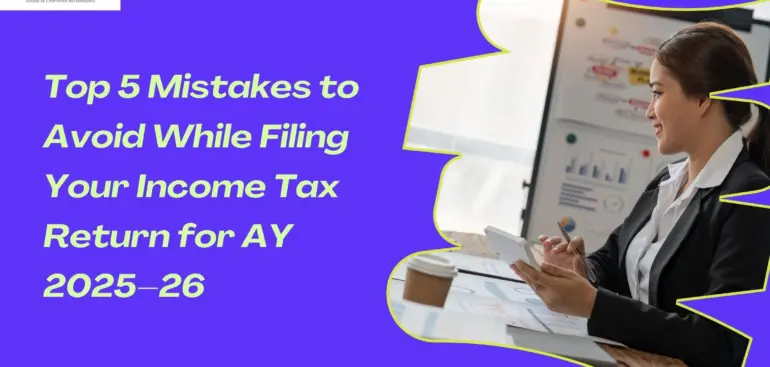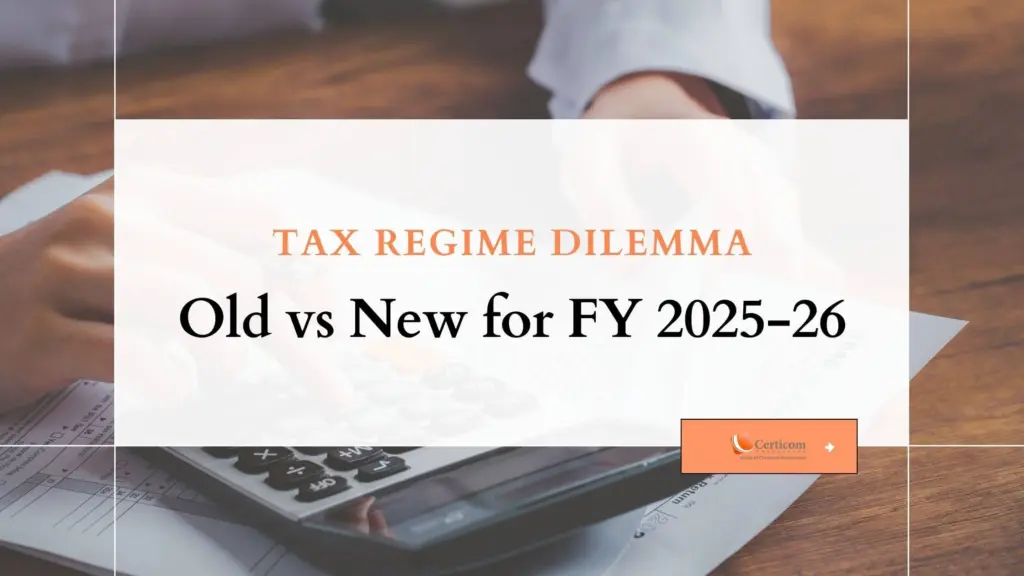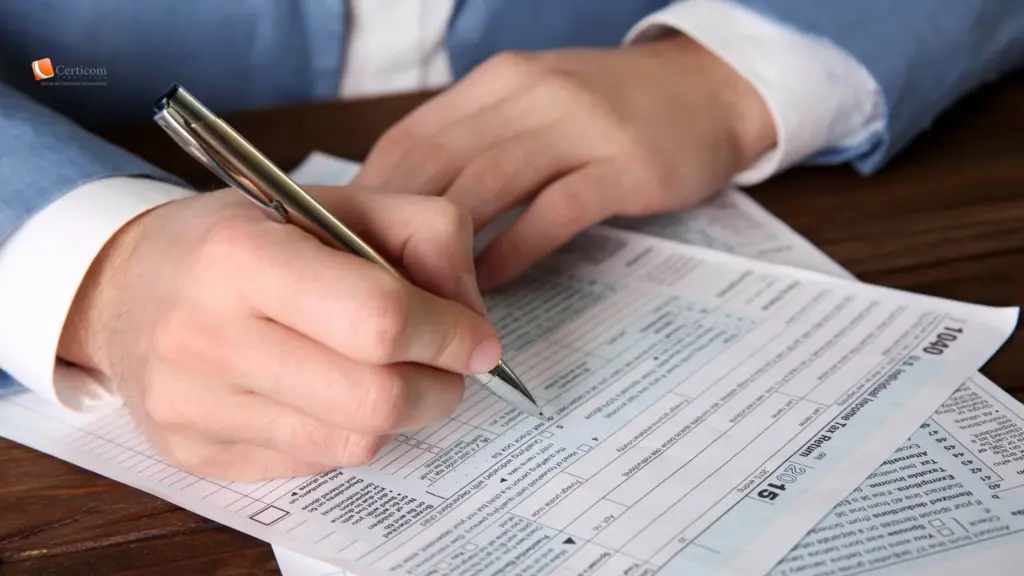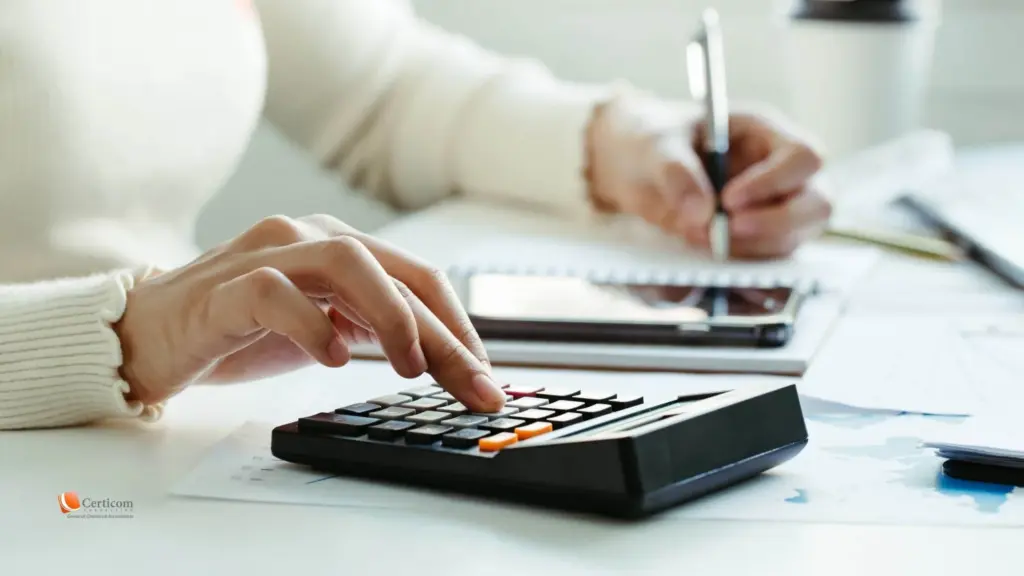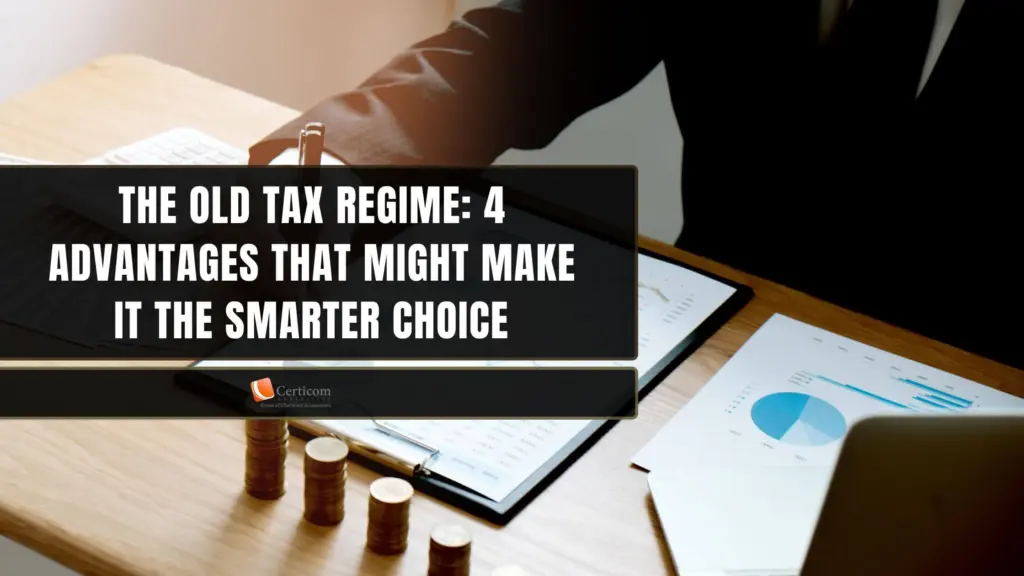Top 5 Mistakes to Avoid While Filing Your Income Tax Return for AY 2025–26
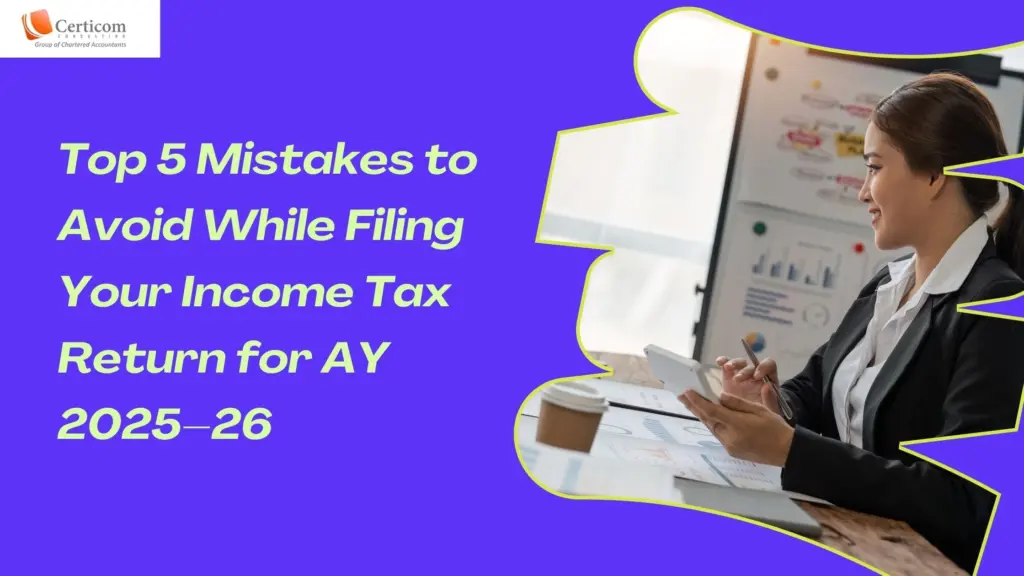
As the deadline for filing Income Tax Returns (ITR) for the Assessment Year 2025–26 approaches, individual taxpayers are busy gathering key financial documents—salary slips, bank statements, dividend records, capital gains summaries, and other income-related details from the financial year 2024–25.
Filing your tax return accurately and on time is not just about compliance—it’s about avoiding penalties, unnecessary notices, and delays. Small oversights can lead to big complications, including scrutiny from tax authorities, financial penalties, and loss of certain tax benefits.
Here are the top five common mistakes you must steer clear of to ensure a hassle-free ITR filing experience this year:
1. Missing the ITR Filing Deadline
The due date for most individual taxpayers to file their return is July 31, 2025. Missing this deadline may attract late filing fees ranging from ₹1,000 to ₹10,000, depending on your total income and the delay in filing. Furthermore, filing after the due date can cause loss of certain deductions and prevent you from carrying forward specific losses, such as capital losses.
Tip: Set reminders or work with a tax advisor early to ensure your return is filed well before the deadline.

2. Choosing the Wrong ITR Form
Filing your return using the incorrect form is a common yet critical error. For instance:
ITR-1 is applicable for salaried individuals with total income up to ₹50 lakhs and one house property.
ITR-2 is suitable for individuals having capital gains or owning multiple house properties.
Filing with the wrong form may lead to return rejection, delayed processing, or even legal notices.
Tip: Refer to the latest ITR form guide from the Income Tax Department or consult a professional to determine the correct form for your profile.
3. Not Reporting All Sources of Income
Every income source—no matter how small—must be reported. This includes:
Interest from savings accounts or fixed deposits
Dividends from stocks or mutual funds
Rental income from property
Capital gains, even from minor trades
Failure to report any such income could result in penalties and scrutiny.
Tip: Review all bank accounts (including dormant ones), demat statements, and AIS/Form 26AS to ensure no income is overlooked.
4. Ignoring Form 26AS and Annual Information Statement (AIS)
These two documents are essential tools for cross-verifying your income and TDS details:
Form 26AS shows tax deducted at source, advance tax paid, and high-value transactions.
AIS provides an extended snapshot of all financial transactions linked to your PAN.
Mismatch between these records and your ITR can trigger notices or delay in refund processing.
Tip: Always reconcile your tax filing data with both Form 26AS and AIS before submission.

5. Not Verifying Your ITR After Filing
Many taxpayers file their return but forget to complete the final step: verification. An unverified ITR is treated as invalid by the Income Tax Department.
Verification can be done through:
Aadhaar-based OTP
Net banking
Digital signature
Offline submission of ITR-V (if needed)
Tip: Complete the verification within 30 days of filing to ensure your return is processed.
Accuracy, timeliness, and thoroughness are key to a smooth tax filing experience. Double-checking your documents, choosing the right form, reporting all income sources, and completing the verification process can save you from major hassles.
By avoiding these five common mistakes, you can not only stay compliant but also ensure that your refund (if any) is processed faster and your record remains clean with the tax authorities.
Related Post
Resident’s Guide to Buying NRI Property in India
Flipkart ESOP Compensation: ₹11 Crore Payout – Salary or Capital Receipt?
Form 16: Key to Accurate ITR Filing
Book A One To One Consultation Now For FREE
How can we help? *


